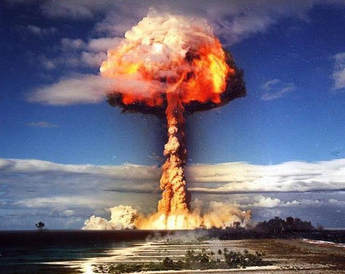 This is an article written years ago, but the message still resonates. Safety must come first! A water heater exploded inside a restaurant in Southern California last year, killing one man, injuring several others and demolishing the rear of the building. Our purpose in writing about it a year later is not to second guess or affix blame. The precise cause or causes will probably never be known for certain. There is value, however, in looking at possible causes and contributing factors. The water heater equipment at the El Torito restaurant was a fairly typical installation: a 726,000 BTU boiler, a ½ horse power pump and a 115 gallon, hot water storage tank. Water softening was provided by two adjacent tanks. Where are the potential weak points or trouble spots in such a set-up? We’ll explore several, some relating directly and others indirectly to the explosion. One direct cause of the explosion was the lack of a temperature and pressure relief (T&P) valve on the storage tank, and a T&P is the last line of defense against overheating. When the system was installed six years earlier it is likely that a T&P was provided in the tank. For whatever reason, the T&P was plugged by the time the explosion occurred on August 1, 1993. You’ve seen leaky relief valves. It’s easy to imagine someone removed the annoyance from the tank, intending to replace it and then forgot about it. There was a pressure relief valve on the boiler, but that would not protect the tank from excess temperature as you’ll see. One reason the tank explodes was that the water in the tank got too hot and there was no T&P relief. Now, how and why did the water get too hot?
We can deduce with some certainty that rusting was well under way inside the tank. First, the tank was six years old, and tanks which are not maintained, have generally begun to deteriorate by that time. (How many stories have you heard about five-year tanks giving out in five years and one day?) Second, this storage tank was fed with softened water. Since salt in softened water easily doubles or triples the consumption of a tank’s sacrificial anode, this tank had probably been without rust protection for several of its six years. (We’ve seen anodes completely consumed in as little as six months in over-softened water conditions.) So the tank was most likely rusting away from both inside and out. Any number of conditions could have caused the weakened metal to fail--a restriction on the cold inlet, which blocked the expansion caused by heating, a water hammer caused by an automatic valve, or even a faucet closing. Fluctuation in line pressure could have done it. Or, if one too many molecules of steel rusted away, the bottom of the tank would begin to deform, cracking the already weakened metal and causing it to break. Once broken, a large leak would develop, instantly allowing the super-heated water to flash into steam with explosive results. To get a clear picture of what happened to the tank at El Torito, you have to re-think your concept of water. Think of water as rocket fuel. And think of the steel tank, which holds the fuel as paper. With enough force, the tank will tear and wrinkle, just like paper does. Imagine that the static pressure involved here is 50 pounds per square inch (psi). The 18 inch diameter of the tank’s bottom has about 354 square inches, so that amounts to 12,700 pounds of pressure against the bottom… over six tons! With a normal water leak, the pressure will drop as the leak grows, limiting the size of the tear. But with super-heated water/rocket fuel, the pressure will not fall off until much of the water turns to steam. The tank may already be through the roof by then! (Did you know a pound of steam is 1,700 times bigger than a pound of water?) What ignited the rocket at El Torito? We imagine it was a combination of excessive rusting of the tank, some form of overpressure or water hammer and water which was heated over 212 degrees. Whether or not incorrect equipment installation, improper equipment operation or equipment failure occurred is a moot point. It’s more productive to focus on the things which will make the system less dangerous. It’s likely that people monkeyed with the controls, and not knowing all the effects of what they were doing led to an unsafe condition. To avoid this situation in your own work, talk to the people who actually use the equipment. Talk to the dishwasher. Is he satisfied with the hot water supply? Listen to any complaints or comments people have. Although they may not understand how the equipment functions, they know what it does or doesn’t do. Thy will give you the information you need to keep the equipment behaving, and that will help you to keep unskilled hands off the controls. Ask directly if anyone else adjusts or operates the equipment. Look for evidence of others’ work, like loose access covers, wrench marks or inappropriate settings. It’s not in anyone’s best interest to have unskilled hands on the equipment. A comprehensive service routine and printed forms are needed to make sure regularly scheduled service/maintenance is adequate and complete. Mechanics may lose the ability to really see a system, especially one they’ve taken care of for a long time. Over familiarity can lead them to feel they know what components need maintenance, so some other parts may not be checked as well or as often as they should be. It’s important to devise and use forms that require service and inspection information to be written down. Keeping written records is still important even though we all use computers now. I like putting service info directly on the equipment, so it can’t be lost or ignored too easily. Yours, Larry
1 Comment
|
Larry Weingarten
Looking back over my working life of 50+ years, it seems clear that self sufficiency has always been the best way for me to be useful. Now, mix in a strong interest in water in its many forms and the wide world of animals and you'll know what's important to me. Archives
January 2023
Categories |
Copyright © 2014 - 2023
All Rights Reserved
All Rights Reserved



 RSS Feed
RSS Feed